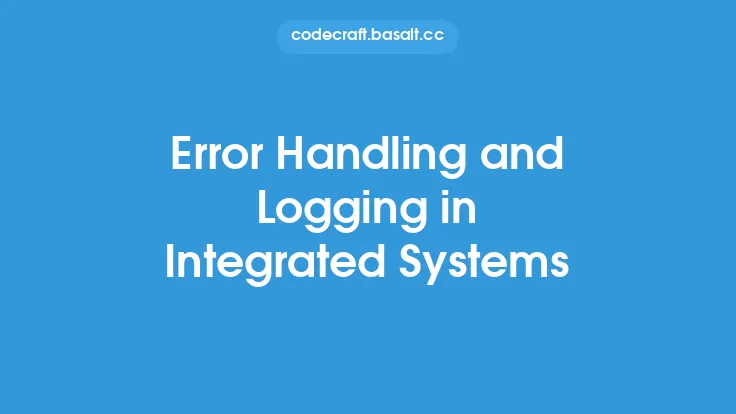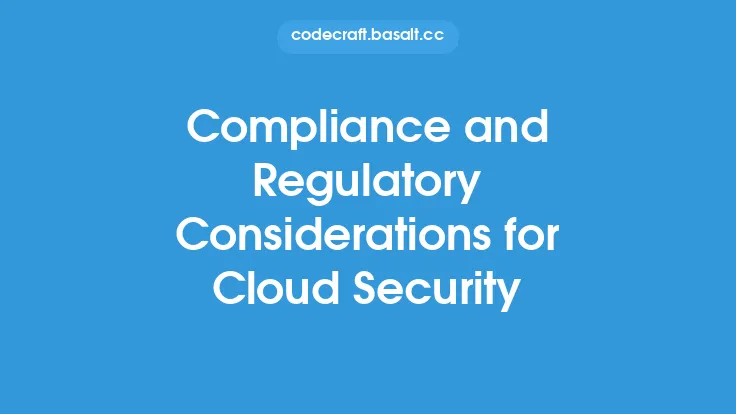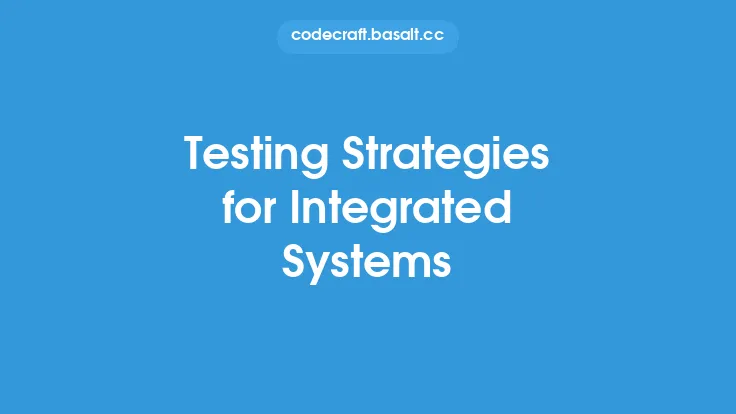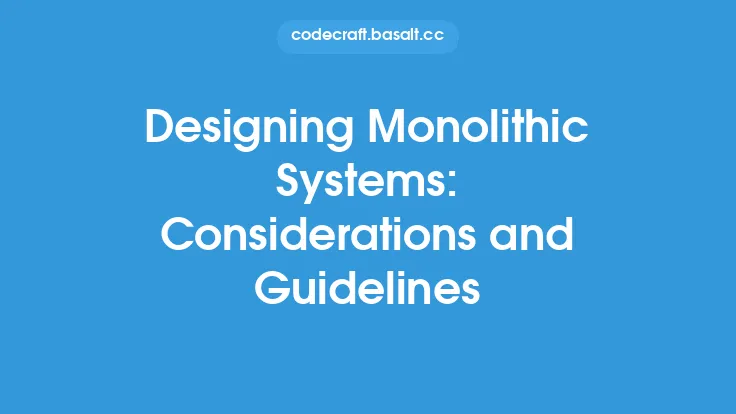When designing and implementing integrated systems, security is a paramount concern that cannot be overstated. As systems become increasingly interconnected, the potential attack surface expands, making it more challenging to maintain the confidentiality, integrity, and availability of sensitive data. In this context, security is not a one-time consideration, but rather an ongoing process that requires continuous monitoring, evaluation, and improvement. In this article, we will delve into the evergreen considerations for maintaining security in integrated systems, exploring the fundamental principles, best practices, and technical strategies that can help ensure the security and resilience of these complex systems.
Security Fundamentals
At the heart of any security strategy lies a deep understanding of the fundamental principles that underpin it. These principles include confidentiality, integrity, and availability, collectively known as the CIA triad. Confidentiality refers to the protection of sensitive information from unauthorized access, integrity ensures that data is accurate, complete, and not modified without authorization, and availability guarantees that data and systems are accessible and usable when needed. Understanding these principles is crucial for designing and implementing secure integrated systems. Moreover, security should be considered from the outset, integrated into every phase of the system development lifecycle, from planning and design through to deployment and maintenance. This approach, known as security by design, helps ensure that security is not an afterthought but a core component of the system's architecture.
Threat Modeling and Risk Assessment
Threat modeling and risk assessment are critical components of maintaining security in integrated systems. Threat modeling involves identifying potential threats and vulnerabilities, analyzing their likelihood and potential impact, and prioritizing them based on risk. This process helps in understanding the attack surface of the system and in designing appropriate countermeasures. Risk assessment, on the other hand, involves evaluating the potential risks associated with a particular system or process, considering factors such as the sensitivity of the data, the potential consequences of a breach, and the effectiveness of existing security controls. By conducting thorough threat modeling and risk assessments, organizations can proactively identify and mitigate potential security risks, reducing the likelihood of a successful attack.
Secure Communication Protocols
Secure communication protocols are essential for protecting data in transit within integrated systems. Protocols such as HTTPS (Hypertext Transfer Protocol Secure), SFTP (Secure File Transfer Protocol), and SSH (Secure Shell) provide encryption and authentication mechanisms that prevent eavesdropping, tampering, and man-in-the-middle attacks. Additionally, the use of secure communication protocols like TLS (Transport Layer Security) and its predecessor SSL (Secure Sockets Layer) can ensure that data exchanged between systems remains confidential and integrity is maintained. Implementing these protocols requires careful consideration of factors such as certificate management, protocol version support, and cipher suite selection to ensure the highest level of security.
Access Control and Authentication
Access control and authentication are vital security mechanisms in integrated systems, ensuring that only authorized entities can access or modify data and system resources. Access control involves setting permissions and privileges that define what actions an entity can perform on a system or its data. Authentication, on the other hand, is the process of verifying the identity of entities attempting to access the system. Implementing robust access control and authentication mechanisms, such as role-based access control (RBAC), multi-factor authentication (MFA), and single sign-on (SSO), can significantly enhance the security posture of integrated systems. These mechanisms should be designed with the principle of least privilege in mind, where entities are granted only the necessary permissions to perform their tasks, thereby reducing the potential damage from a security breach.
Data Encryption
Data encryption is a powerful security control that protects data both in transit and at rest. By encrypting data, organizations can ensure that even if unauthorized access occurs, the data will be unreadable without the decryption key. Integrated systems should implement data encryption for sensitive data, using algorithms and protocols that are widely accepted and regularly reviewed for security vulnerabilities. Key management is also a critical aspect of data encryption, as the security of the encrypted data is only as strong as the security of the encryption keys. Best practices for key management include secure key generation, distribution, storage, and revocation, as well as regular key rotation to minimize the impact of a key compromise.
Continuous Monitoring and Incident Response
Maintaining security in integrated systems requires continuous monitoring and a robust incident response plan. Continuous monitoring involves regularly scanning for vulnerabilities, monitoring system logs for suspicious activity, and performing security audits to identify and address potential security issues before they can be exploited. An incident response plan outlines the procedures to follow in the event of a security incident, ensuring a swift and effective response to minimize damage and restore system operation as quickly as possible. This plan should include procedures for incident detection, containment, eradication, recovery, and post-incident activities, and should be regularly tested and updated to ensure its effectiveness.
Security Awareness and Training
Finally, security awareness and training are essential for maintaining the security of integrated systems. All personnel involved in the design, implementation, and operation of these systems should receive regular security training, focusing on security best practices, the identification of potential security threats, and the procedures for reporting and responding to security incidents. Security awareness programs can help foster a culture of security within the organization, encouraging employees to take an active role in protecting the security of integrated systems. This includes training on phishing attacks, password management, and the safe use of system resources, among other topics, to ensure that human error does not become a vector for security breaches.
Conclusion
In conclusion, maintaining security in integrated systems is a multifaceted challenge that requires a comprehensive approach. By understanding security fundamentals, conducting thorough threat modeling and risk assessments, implementing secure communication protocols, access control, and authentication mechanisms, encrypting sensitive data, engaging in continuous monitoring, and fostering a culture of security through awareness and training, organizations can significantly enhance the security and resilience of their integrated systems. As technology evolves and new threats emerge, it is crucial to stay informed and adapt security strategies accordingly, ensuring that the security of integrated systems remains an evergreen consideration.





